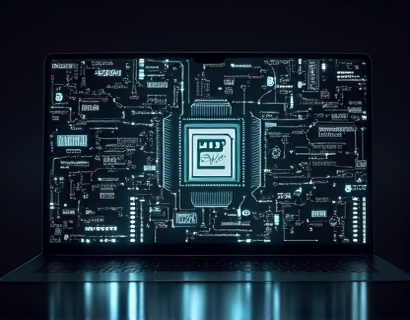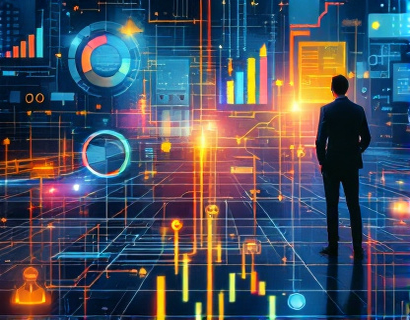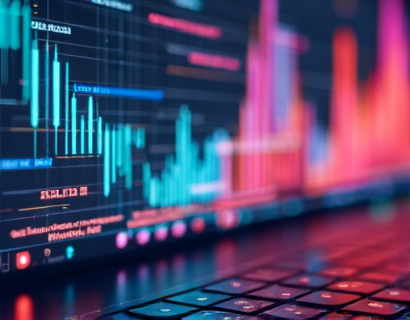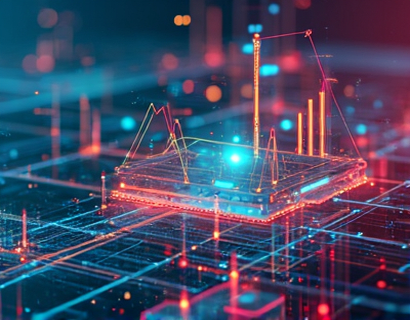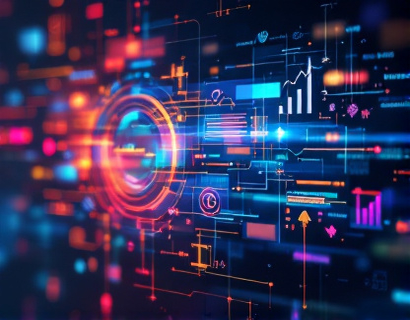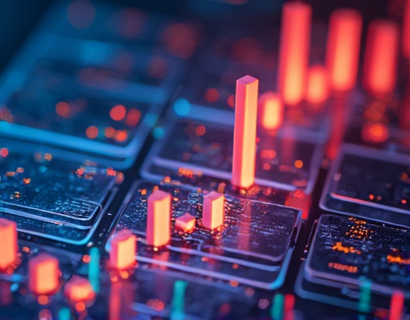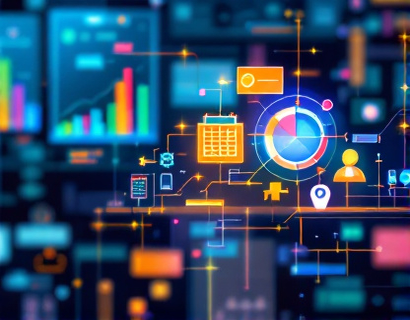Unleashing Next-Gen Ucosystem Engagement Through AI and Crypto
The intersection of artificial intelligence (AI) and cryptocurrency is paving the way for a new era of digital engagement. This synergy is revolutionizing how businesses interact with users within digital ecosystems, offering advanced strategies and insights to drive growth and innovation. As technology continues to evolve, understanding how to leverage AI and cryptocurrency can significantly enhance user experiences and foster deeper connections. This guide delves into the transformative potential of these technologies, providing a comprehensive look at how they can be harnessed to revolutionize digital engagement.
Understanding AI and Cryptocurrency
Artificial intelligence refers to the simulation of human intelligence processes by machines, particularly computer systems. These processes include learning (the acquisition of information and rules for using it), reasoning (using rules to reach approximate or definite conclusions), and self-correction. AI technologies such as machine learning, natural language processing, and predictive analytics are increasingly being integrated into various sectors, from healthcare to finance.
Cryptocurrency, on the other hand, is a digital or virtual currency that uses cryptography for security. It operates on a decentralized network, typically a blockchain, which ensures transparency and immutability. Bitcoin, the first and most well-known cryptocurrency, paved the way for thousands of alternative coins (altcoins) and tokens, each with unique features and use cases. The combination of AI and cryptocurrency is creating new paradigms for data analysis, security, and user interaction.
AI-Driven Personalization in Ucosystems
One of the most significant impacts of AI in digital ecosystems is the enhancement of personalization. By analyzing vast amounts of user data, AI algorithms can predict user preferences and behaviors, enabling highly tailored experiences. In the context of Ucosystems, this means that applications and services can adapt in real-time to individual user needs, improving satisfaction and engagement.
For instance, AI can curate content feeds based on a user's past interactions, ensuring they see the most relevant information. This level of personalization not only keeps users engaged but also increases the likelihood of them exploring more features within the ecosystem. Moreover, AI-driven chatbots and virtual assistants can provide instant, personalized support, further enhancing the user experience.
Enhancing Security with Cryptography
Security is a paramount concern in digital ecosystems, and cryptocurrency's underlying cryptography offers robust solutions. Blockchain technology, the backbone of most cryptocurrencies, ensures that transactions are secure, transparent, and tamper-proof. By integrating blockchain into Ucosystems, businesses can build trust with their users by providing a secure environment for data storage and transactions.
Additionally, cryptographic techniques such as zero-knowledge proofs and homomorphic encryption allow for secure data processing without compromising user privacy. This is particularly valuable in Ucosystems where sensitive information is often handled. By leveraging these technologies, businesses can create secure yet user-friendly platforms that comply with stringent data protection regulations.
Tokenization for Incentivization and Engagement
Tokenization, a process where real-world assets are represented by digital tokens on a blockchain, is another area where AI and cryptocurrency intersect to enhance Ucosystem engagement. Tokens can be used to incentivize user participation, reward loyal users, and create new revenue streams.
For example, a Ucosystem can issue its own tokens to reward users for contributing content, participating in community discussions, or completing specific tasks. These tokens can then be used within the ecosystem to access premium features, purchase goods, or even vote on future developments. AI can optimize the distribution and management of these tokens, ensuring that incentives are aligned with user behavior and ecosystem goals.
Predictive Analytics for User Retention
Predictive analytics, powered by AI, can significantly improve user retention in digital ecosystems. By analyzing user data, AI algorithms can identify patterns and predict future behaviors, allowing businesses to proactively address potential issues. For instance, if the system detects that a user is at risk of churning, it can trigger personalized retention strategies such as targeted offers or enhanced support.
Moreover, predictive analytics can help in identifying new user segments and tailoring marketing strategies to attract and retain them. This data-driven approach ensures that resources are allocated efficiently, maximizing the return on investment. In a Ucosystem, this means a more cohesive and engaging user base, which is crucial for long-term success.
Decentralized Identity Management
Decentralized identity management is another transformative application of AI and cryptocurrency in Ucosystems. Traditional identity management systems are centralized, making them vulnerable to breaches and misuse. Blockchain-based identity solutions offer a decentralized alternative, giving users control over their personal data.
AI can enhance this process by managing and verifying identities in real-time, ensuring that only authorized users access specific resources. This not only improves security but also streamlines the user onboarding process. Users can seamlessly authenticate themselves across different services within the ecosystem, reducing friction and enhancing the overall experience.
Smart Contracts for Automated Interactions
Smart contracts, self-executing contracts with the terms directly written into code, are a powerful tool in Ucosystems. They can automate various processes, from payment settlements to content moderation, reducing the need for intermediaries and increasing efficiency. AI can further optimize smart contracts by analyzing user interactions and dynamically adjusting contract parameters to better serve the community.
For example, a smart contract can be programmed to release rewards to users based on their activity levels, as determined by AI-driven analytics. This ensures that incentives are distributed fairly and effectively, fostering a more active and engaged user base. The combination of AI and smart contracts creates a more responsive and adaptive Ucosystem.
Data Marketplaces and User Empowerment
Data marketplaces, facilitated by blockchain and AI, empower users by giving them control over their data and the ability to monetize it. In a traditional setup, users often have little say in how their data is used. However, with blockchain-based data marketplaces, users can choose to share their data with specific services in exchange for tokens or other incentives.
AI plays a crucial role in these marketplaces by matching data suppliers with demanders based on relevance and value. This not only creates new revenue streams for users but also ensures that data is used in ways that benefit both the users and the ecosystem. The result is a more transparent and user-centric digital environment.
Challenges and Considerations
While the integration of AI and cryptocurrency in Ucosystems offers numerous benefits, it also comes with challenges. Regulatory compliance is a significant concern, as the legal landscape for cryptocurrencies and AI is still evolving. Businesses must stay informed about regulatory changes and ensure their practices align with current laws.
Another challenge is the technical complexity involved in implementing these advanced technologies. Developing a robust and secure system requires expertise in both AI and blockchain. Collaboration with experienced developers and consultants can help overcome these hurdles.
Additionally, user education is crucial. Many users are still unfamiliar with blockchain and AI concepts, which can hinder adoption. Providing clear, accessible information and user-friendly interfaces can help bridge this gap and foster wider acceptance.
Future Trends and Opportunities
The future of AI and cryptocurrency in Ucosystems is promising, with several trends and opportunities on the horizon. One such trend is the rise of Web3, a decentralized internet built on blockchain technology. Web3 applications will leverage AI to create more interactive and personalized user experiences, further blurring the lines between the physical and digital worlds.
Another opportunity lies in the integration of AI with emerging technologies like augmented reality (AR) and virtual reality (VR). These technologies, combined with blockchain and AI, can create immersive Ucosystems where users can interact in entirely new ways. For instance, virtual events and experiences can be enhanced with AI-driven personalization and secure, token-based economies.
Furthermore, the growth of decentralized finance (DeFi) platforms presents new opportunities for Ucosystems to offer financial services that are more accessible and transparent. AI can optimize these platforms by providing advanced risk management and fraud detection, ensuring a secure and reliable user experience.
In conclusion, the synergy between AI and cryptocurrency is transforming digital ecosystems, offering unprecedented opportunities for businesses to engage and retain users. By embracing these technologies, companies can create more secure, personalized, and rewarding experiences, driving growth and innovation in the tech landscape.


















